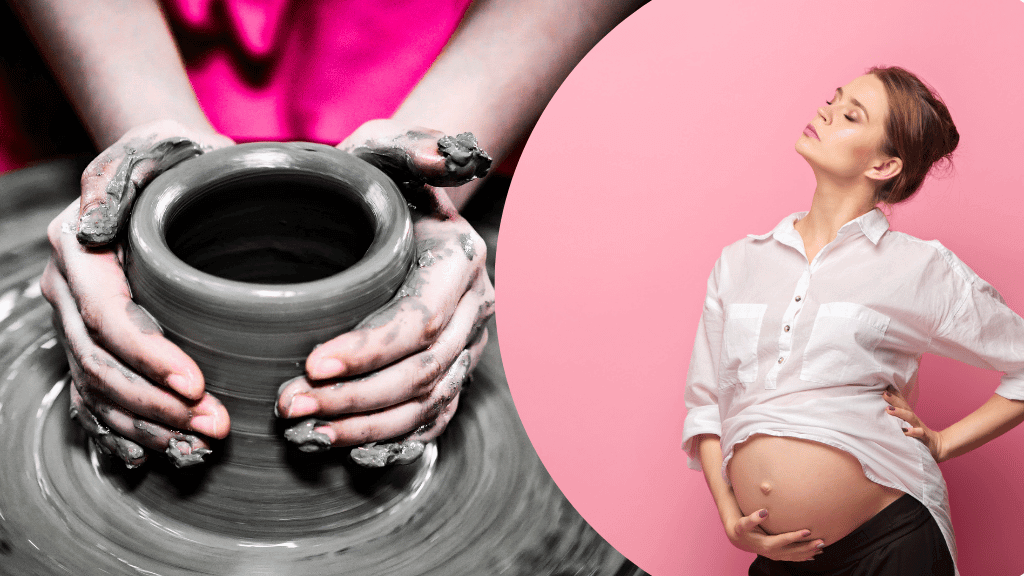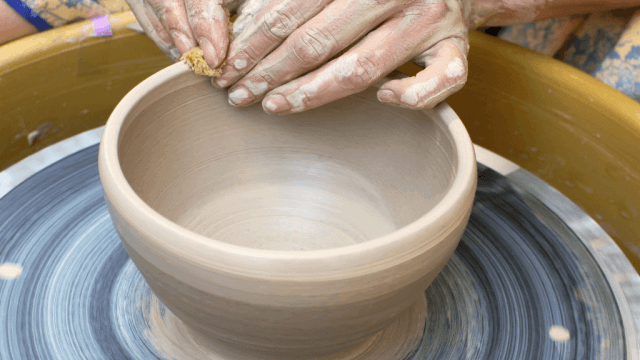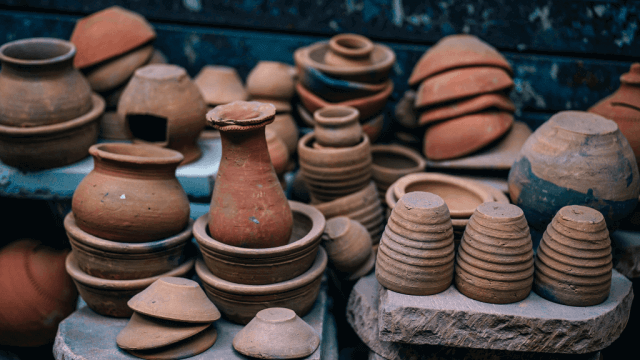Pregnant women can continue enjoying pottery with specialized tools designed for comfort and safety.
Essential pottery tools include ergonomic trimming, height-adjustable pottery wheels, electric kilns with good ventilation, non-toxic glazes and clay, wrist-support gloves, and padded seats or cushions.
These tools help reduce strain, promote proper posture, and ensure a healthier working environment, allowing pregnant women to partake in pottery safely and comfortably.
Introduction to Pottery Tools for Pregnant Women
Pregnancy should not be a limitation for women wanting to practice pottery.
With the right set of tools, pottery while pregnant can be a safe and enjoyable activity.
This blog post will discuss essential pottery tools that cater to the specific needs of pregnant women, making their pottery experience comfortable and hazard-free.
Ergonomic Trimming Tools
Minimizing strain, specifically on the wrists and hands, is crucial during pregnancy.
Ergonomic trimming tools are designed with comfortable grips, reducing stress on joints and providing better control while trimming and carving.
Height-Adjustable Pottery Wheels
Pregnant women should use height-adjustable pottery wheels to ensure proper posture and reduce back pain.
These wheels allow them to work comfortably on a stool or a chair without straining their back or legs.
Electric Kilns and Ventilation
It is important to prioritize safety when it comes to heating the pottery.
Electric kilns are safer and easier to control compared to traditional gas kilns.
Also, ensure proper work area ventilation to avoid exposure to harmful fumes.
Non-Toxic Clay and Glazes
Using non-toxic clays and glazes is essential for maintaining a healthy pregnancy. Pregnant women should look for “food-safe” and “lead-free” products to ensure they work with safe materials.
Wrist-Support Gloves
Wrist-support gloves provide extra support to the wrists while working with clay. This added reinforcement can help alleviate discomfort and prevent potential injuries from prolonged pottery sessions.
Padding and Seating Options
Comfortable seating is vital for pregnant women engaging in pottery. Opt for padded seats or cushions that support the hips and lower back adequately, promoting proper body alignment during the creative process.
Pregnancy-Safe Cleaners
Keeping your pottery workspace clean and hygienic is crucial during pregnancy. Opt for pregnancy-safe cleaning products and avoid harsh chemicals that may harm your pregnancy or your developing baby.
Choose environmentally friendly, plant-based cleaners for cleaning tools and surfaces to maintain a safe working environment.
Clay-Handling Techniques
Adapting your clay-handling techniques can make pottery sessions more comfortable for pregnant women. For instance, techniques like wedging and kneading to prepare clay may cause strain on the wrists and lower back during pregnancy. Consider using a clay pugmill to mix and prepare your clay with less physical effort.
Storage Solutions
Prevent unnecessary bending or lifting by optimizing your workspace with smart storage solutions. Wall-mounted shelves, rolling carts, and easily accessible storage bins can dramatically reduce strain on your back, ensuring a comfortable pottery experience throughout pregnancy.
Rest Breaks and Stretching
Pregnant women should take regular breaks while working on pottery projects to prevent overexertion.
Incorporate stretches that target the back, neck, and shoulders to maintain proper body alignment and minimize discomfort.
Consult your healthcare provider for guidance on the right stretches and rest intervals that suit your needs.
Attend Workshops or Classes
Joining pottery workshops or classes specifically designed for pregnant women can provide valuable guidance on adapting your pottery practice during pregnancy.
These courses can also connect you with other expectant mothers who share your passion for pottery, offering a supportive and understanding community.
FAQ Section: Pottery Tools for Pregnant Women
If you still have questions after reading this blog post, our FAQ section below addresses common concerns about essential pottery tools and practices for pregnant women.
We hope these answers help clarify any uncertainties and ensure a safe pottery experience during pregnancy.
How can I find out if a clay or glaze is non-toxic and safe for use during pregnancy?
Check the labels and packaging of the products for terms like “food-safe” and “lead-free.” You can also refer to the manufacturer’s website or contact customer support for more information on the material’s safety during pregnancy.
Are there any specific clay types that are safest for pregnant women?
Low-fire clays, like earthenware and some stoneware, typically do not require exposure to harmful chemicals or high temperatures.
Stick to well-known brands and always check for non-toxic, lead-free labels to ensure the safest options while pregnant.
What precautions should be taken when working with a kiln while pregnant?
Pregnant women should prioritize safety while using a kiln.
Choose an electric kiln for better temperature control and safety than gas kilns.
Ensure proper ventilation in the work area and avoid heavy lifting while loading and unloading the kiln.
How often should I take breaks and stretch during pottery sessions while pregnant?
Listen to your body and take breaks as needed.
You can consult your healthcare provider for personalized guidance on the appropriate duration between breaks and the best stretches for your needs.
Generally, taking short, frequent breaks and incorporating stretching exercises tailored for pregnant women is advisable.
Are there any aspects of pottery I should avoid completely during pregnancy?
While many aspects of pottery can be safely practiced during pregnancy with the right tools and precautions, avoiding activities involving heavy lifting, exposure to toxic materials, or extensive bending is best.
Consult your healthcare provider to discuss your situation and receive tailored advice on safe pottery practices during pregnancy.











